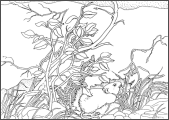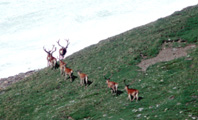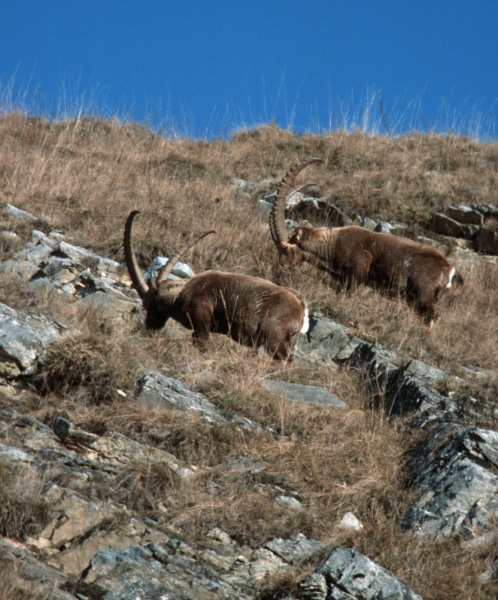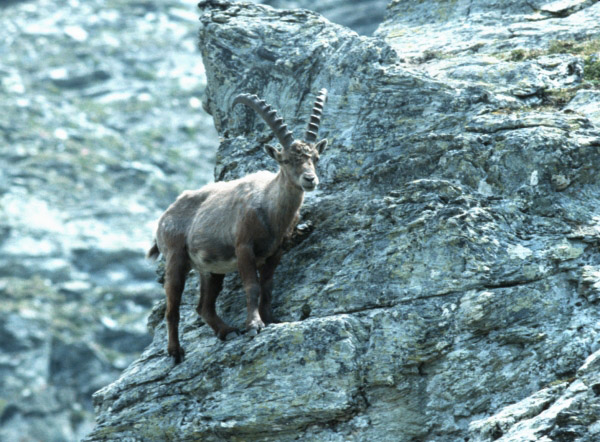 |
|
|
|
|
|
Herbivores are the most frequent animal group in the alpine zone. A large variety of organisms feed on plants, but the importance of certain orders and the species diversity within the orders are the main differences between the alpine zone and those in the lowland. |
|
Small mammals form the most important and diverse group of herbivores. Their biomass in the alpine zone far exceeds that of large herbivores. To find cover in the low structured alpine grassland many small mammals live in burrows or boulderfields. Many small mammals (e.g. common vole (Microtus arvalis,
snow vole (Microtus nivalis)) are active year-round and can also
feed below the snow cover. Others, such as the marmot (Marmota marmota)
hibernate
to overcome the the time of food shortage between the vegetation periods. |
1 - Microtus arvalis active under the snow cover (111K) |
|
2 - Red deer on seasonal migration. Photo: M. Merker (110K) |
In contrast to the small herbivores, the large herbivores are more mobile and have much wider ranges. They do not live in the grassland, but only feed there and retreat for cover into lower forests or into rocky areas. Some of them migrate to lower altitudes in winter when food availability is low in the alpine zone. |
3a and b - Ibex (Capra ibex) feeds in the alpine grassland and retreats into the rocks to rest. Photo left: P. Vonow (163K and 136K) |
|
In contrast to the case at lower altitudes, the specialisation of invertebrate herbivores is very low. The short vegetation period and the unpredictability of where and when most plants will appear does not allow a high grade of specialisation. On the other hand, the diversity of invertebrate herbivores is much higher than often believed. In one survey on Alp Flix, a 5 km² small alp at 2000 m in Grison, Switzerland, more than 200 species of herbivore invertebrates were found above the treeline. The relevance of snails (Gastropoda) as herbivores in the alpine zone is negligible. However, they can be found on summits up to more than 3000 m and, as in lower altitudes, the slugs (without external shell) account for the largest part of the biomass. They live mainly in rock crevices where they find protection from the strong radiation on the surface, which would lead to overheating and dessication. Molluscans at high altitude mainly live on lichens and algae. Terrestrial snails require calcium to build up their shells and are therefore seldom encountered in non-limestone mountains (like e.g. the Snowy Mountains of Australia). |
29 August 2011 |
||
| |
||



